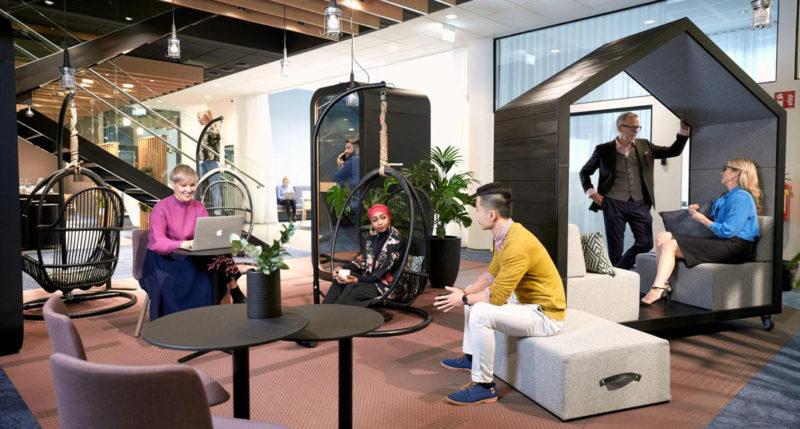
“Last year, I felt so bad that I thought I was going to have a breakdown. I’d been feeling burnt out for months, and with my to-do list growing as much as my stress levels, I wasn’t coping well. I could barely get out of bed or motivate myself to do the simplest of tasks. I was constantly stressed, and I didn’t feel like myself at all.”
This quote isn’t from a company director or CEO. It is from Radhika Sanghani, a 27-year-old journalist who opened up about her own experiences of chronic stress and burnout in a BBC article earlier this year.
We often think of burnout as something that only affects senior employees who are left mentally, emotionally, and physically drained by the pressures of top-level responsibilities. And, while that can be the case, the ‘always on’ culture of modern work means young people – e.g. millennial employees – are experiencing the occupational syndrome, too.
The Stats
According to the World Health Organization (WHO) “Burnout is a syndrome conceptualized as resulting from chronic workplace stress that has not been successfully managed” and it is characterized by “feelings of energy depletion or exhaustion, reduced professional efficacy, and increased mental distance from one’s job.”
Unfortunately, these factors are combining with stressors beyond work to impact the well-being of people across the workforce spectrum – young and old, graduates and board members.
A 2018 Mental Health Foundation study by YouGov found that just 7-percent of young adult respondents hadn’t felt overwhelmed or unable to cope at some point during the year. Meanwhile, a U.S. study revealed young people are now twice as likely to experience constant exhaustion than was the case at the start at the millennium.
So, why are young people struggling to cope in the modern workplace? And what can employers and employees do to help combat the onset of burnout at an early age?
Internal and External Pressure
The pressure young people feel to succeed shouldn’t be underestimated. It can come internally or from external sources like family expectations, seeing friends climbing the career ladder, or media headlines proclaiming, ‘You should be earning X amount by age X’.
60% of 18-24-year olds and 41% of 25-34-year olds reported the pressure to succeed as a stressor, compared to just 6% of people aged 55+.”
– Stress: Are We Coping? Research Report, 2018
Those just starting their career journey can second guess if they’re in the right industry, feel pressure to be earning the same as their peers, and contend with big life issues like getting on the property ladder or starting a family. These stressful scenarios are only exacerbated by the social aspect of the millennial workforce who are constantly reminded of how everyone around them is doing through the often-rose-tinted lens of social media.
Always on Society
“Connectivity through technology outside of ‘normal working hours’ can facilitate collaboration. I think the issue is that this technology use often means that we have compromised our downtime,” James Hewitt of Hintsa Performance explained at the Firstbeat HRV Summit 2019 in May.
What may have been a natural moment of recovery – e.g. standing in a queue waiting for a coffee – has become a moment to fill with pseudo-work looking on your phone.”
– James Hewitt, Hintsa Performance
This always on culture – where we’re never too far away from our smart phones – can cause anxiety as people feel responsible to answer work emails outside work hours. And this can be compounded by the pressure to keep in the loop with friends as the Whatsapp notifications suggesting that ‘quick drink after work’ arrive.
Burnout can rear its head when there is little recovery and resilience to combat the stressors of everyday life. To cope, we need to experience real downtime and moments of recovery. These relaxing moments are crucial to counterbalance the stress we feel and allow the body to recharge its resources.
These moments are increasingly rare for many of us. According to Hewitt, even during a traditionally relaxing activity like watching T.V., people switch between the big screen, smart phone, tablet computer etc. 21 times an hour.
Spotting the Signs
These factors are just some of what is causing signs of burnout among young people in the workplace. But how can employers spot these signs?
Early signs of burnout for employers to look out for:
- Employee appears detached from their work and colleagues
- A usually reliable employee is starting to miss deadlines
- Mood swings
- Increased sick leave
- Working more overtime hours (as they try to keep on top of work)
And, as an employee, you may feel:
- Always tired
- Increasingly irritable
- The satisfaction of completing tasks is no longer there
- Struggling to sleep
- Find it difficult to concentrate
So, what can employers do to help support the younger members of their workforce?
Offer Support
Put in place a structure that supports every member of your workforce by promoting well-being initiatives and mental health programs. If necessary, enforce clear boundaries when it comes to working hours. Even little things like getting colleagues away from their desk for lunch and making it clear that work emails aren’t expected to be answered outside working hours can help introduce moments of recovery that ultimately help put work expectations into perspective.
Reassess Workload Demands
Trying to juggle multiple tasks can be difficult for even the most experienced employees. If in a management role, help the younger workforce by making clear what is a priority task and what can wait a little longer. At the end of the day, a burnt out employee isn’t going to be able to achieve anything productive at work (beware presenteeism). Streamlining their workload early on can help in the long run.
Motivate and Engage
Disillusion can set in when it feels like hard work is going unnoticed and isn’t leading anywhere. Let staff know they’re making a difference and make their path to career progression clear when possible to help alleviate financial or career concerns. Back this up with the necessary training opportunities and resources.
Want to be able to anticipate burnout and boost employee well-being?
You might also be interested in

Work Pace and Workspace Matter – A Firstbeat and UMA Workspace Project
How do your surroundings affect your well-being and how effectively you work?

Highlights of Our Recent Firstbeat Events in London: Towards Better Corporate Performance and Healthier Employees
A review of the Corporate Breakfast and Professional User Workshop events held in London.

5 Practical Tips to Help Avoid Workplace Burnout
One of the biggest stress-related issues that continues to impact the workplace is burnout. But what can you do if you start to feel yourself heading in that direction?



